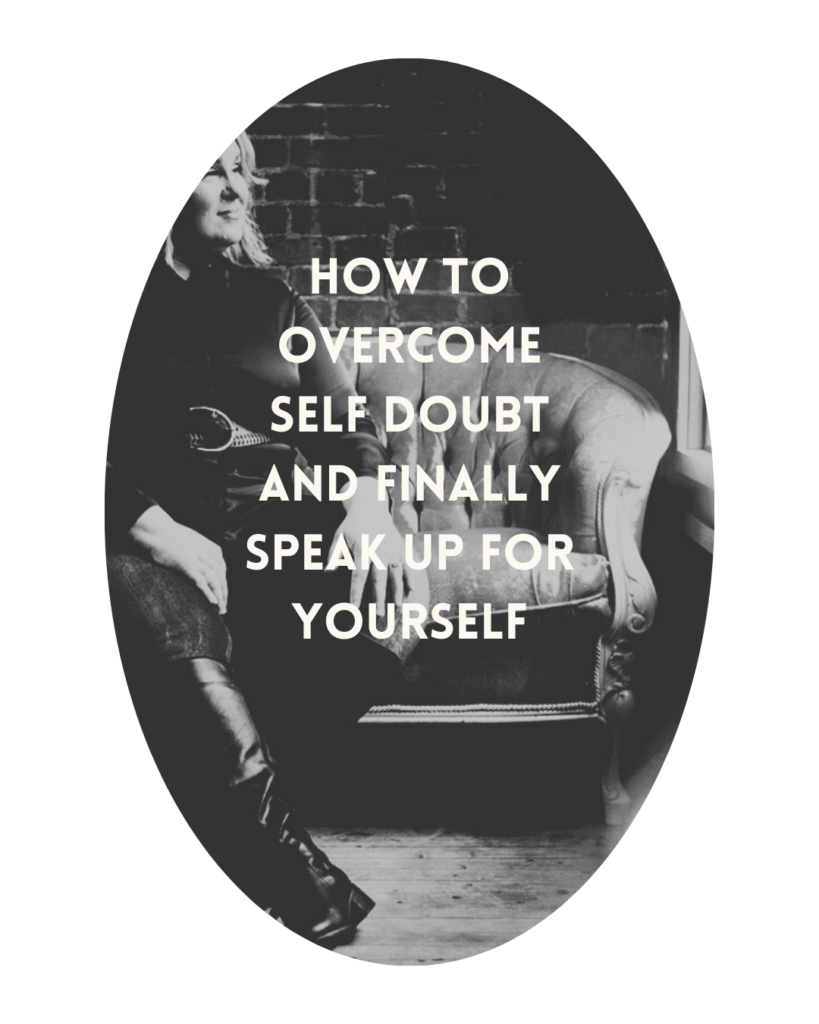© - Content and images in this blog are copyright Elise Besler of EB Voice Empowerment, unless stated otherwise. Feel free to repost or share images for non-commercial purpose, but please make sure to link back to this website and its original post.
℗ - We do not store any information about your visit to our website other than for analytics and optimization for content and reading experience through the use of cookies.
℅ - Our site does at times contain paid advertisements, sponsored content, and/or affiliate links.
Reader Etiquette
I'm your go-to expert for helping to ditch the fear and own your voice. Whether you’re speaking, singing, or setting boundaries, I help you go beyond technique -rewiring your nervous system so full expression feels natural, effortless, and so you.
Hi! I'm Elise Besler - Voice Coach & Somatic practitioner
February 12, 2025

Self-doubt can feel paralyzing, especially if past experiences have taught you that speaking up leads to rejection, conflict, or dismissal. But your voice matters, and overcoming self-doubt isn’t about forcing confidence ~ it’s about creating safety in your body and mind so that you can express yourself in spite of fear and discomfort.
Here’s how to break free from self-doubt and reclaim your right to be heard from a trauma-informed and nervous system literate perspective.
Understanding the Roots of Self-Doubt
Self-doubt isn’t a personal flaw; it’s often a learned response. It comes from a more collapsed state in the nervous system. If you grew up in an environment where your opinions were ignored, criticized, or punished, your nervous system may associate speaking up with danger. This can lead to patterns of people-pleasing, staying silent, or second-guessing your thoughts. The good news? You can rewire this response with intention and care.
Step 1: Regulate Your Nervous System ~ First
Before you even think about speaking up, focus on creating safety in your body. Self-doubt often activates a fight, flight, or freeze response. Try:
- Grounding Techniques: Press your feet firmly into the floor and take slow, deep breaths.
- Somatic Movement: Gentle stretching, shaking, or humming to release tension.
- Nervous System Rewiring Tools: Learn to work WITH your nervous system to rewire the stress responses happening in your body. This is how lasting change is made!
Step 2: Challenge Negative Thought Patterns
Self-doubt thrives on internalized criticism and limiting beliefs. Begin to question these thoughts:
- “Is this belief actually true, or is it a fear-based story?”
- “What would I tell a friend who felt this way?”
- “What small proof do I have that I am capable and worthy?”
Reframing your inner dialogue helps to dismantle the automatic narratives that keep you from using your voice ~ HOT TIP: Work with your nervous system before you challenge your thought patterns ~ it will feel safer and create more capacity to sit with the challenge!
Step 3: Start Small and Practice (AKA: Titrate)
Speaking up doesn’t have to mean launching into difficult conversations right away. Build confidence by:
- Expressing your needs in low-risk situations (e.g., ordering a drink exactly how you want it).
- Practicing self-advocacy in safe spaces with supportive people.
- Writing down your thoughts before verbalizing them, so you feel more prepared.
Step 4: Increase Your Capacity For Discomfort
Speaking up may feel uncomfortable at first, but discomfort doesn’t always mean danger. Your nervous system may send signals that saying “no” or setting a boundary is unsafe ~ but with time, you can build resilience. Remind yourself:
- “Discomfort is temporary; I am safe to express myself.”
- “My voice deserves to be heard, even if it shakes.”
- “Every time I speak up, I build more trust with myself.”
Step 5: Set Boundaries That Honor Your Voice
Part of overcoming self-doubt is realizing that your voice matters in relationships. Setting boundaries is a way to protect your energy and self-worth. Some examples:
- “I need time to think before making a decision.”
- “I’m not available for conversations that disrespect my feelings.”
- “I deserve to take up space without apologizing for it.”
Step 6: Surround Yourself with Supportive People
Healing self-doubt isn’t a solo journey. Seek out relationships where your voice is valued. Whether through therapy, coaching, or a community that uplifts you, having support makes a difference.
Final Thoughts: Your Voice is Worthy
Self-doubt is not a permanent condition ~ it’s a learned response that can be unlearned. By regulating your nervous system, shifting your inner dialogue, and practicing self-expression in safe spaces, you can move from silence to empowerment. You don’t have to be fearless to speak up; you just have to take the next small step. Your voice matters ~ now is the time to use it.
— If you’ve ever struggled to speak up, felt your voice shake in high-stakes moments, or questioned if your words truly mattered, this practice is for you! —
Click HERE for immediate access to the FREE “Find Your Voice” Guided Audio Training.
Take 11 minutes to activate the power of your voice with this guided practice. Includes: Grounding, breath-work and voice-work exercises to help you regulate your nervous system and build a confident voice.

Leave a Reply Cancel reply
Grab
THE "Find YOUR VOICE" AUDIO TRAINING
Welcome, Friend! Around here, we believe that embodiment is sacred, and that every voice deserves to take up space.
This is a space rooted in anti-racism, body liberation, queer-affirming practices, and a commitment to trauma-aware, nervous system-informed growth.